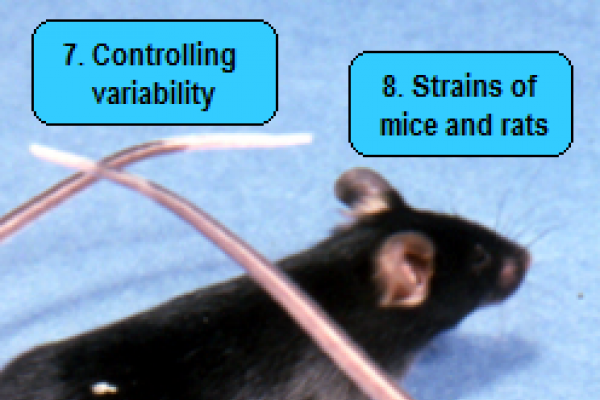Tested: www.3Rs-reduction.co.uk
9 years agoAs an instructor, Hein van Lith often used the interactive programme ‘Experimental Design. A guide to using fewer experimental animals and getting most out of your experiments’, developed by Michael Festing, David Dewhurst and Jake Broadhurst. Because of the limited licence, the programme could only be run in the electronic learning environment of Utrecht’s Faculty of Veterinary Medicine. Now there is a website from the same Michael Festing: www.3Rs-reduction.co.uk. Van Lith tested it, and concludes that it is an efficient means to enhance competence in designing animal experiments.
“My first, personal conclusion was that the website is compatible with my teaching. The site has taken the place of the former, licensed, programme. I use it for example in a tutorial for the Epidemiology & Breeding course as well as in the Laboratory Animal Science courses.
Free
The site is free and non-commercial (no ads). Via www.3Rs-reduction.co.uk you’ll enter the welcome page, and via ‘enter site’ you’ll see the home page and main menu. This screen has 17 modules (blue) and several other pages (green). The first module is about the ethical backgrounds of the 3 Rs. The following modules are about research strategy, experimental unity, the characteristics of a correctly designed experiment, avoiding systematic errors, and power analysis and sample size. There are also modules about understanding and controlling variability, and about the various laboratory mouse and rat populations. The module on setting up experiments explains how to randomise using an Excel spreadsheet, for both completely randomised and randomised block designs.
There are also pages about factorial experiments, regression and correlation, and some information about statistical analyses (since the emphasis is on designing experiments using animals, not the statistical analysis of them). There is also a module on displaying results, and one about the ARRIVE (Animal Research: Reporting In Vivo Experiments) guidelines of Britain’s NC3Rs (National Centre for the Replacement, Refinement and Reduction of Animals in Research). Furthermore, there is a page with an overview of relevant books on the subject of design and statistical analysis of experiments.
Certificate
Most modules have a self-test page, and there is an overall self-test page. Once you have completed all the modules you can download a certificate, where you declare that you actually have done so.
A correct and efficient research design saves animal lives
Many biomedical and bio-veterinary researchers are competent, even brilliant, in their fields, but sometimes their knowledge of the design of animal experiments is limited. This can lead to bias: a bad study design or wrongfully performed statistical analyses. This is a world-wide problem. A correct and more efficient research design can contribute to achieving a considerable reduction in the number of animals, amongst others. Fortunately, in general researchers are open to brushing up their knowledge. This new website can help.
Since correct and efficient experimental design can save many laboratory animals, I would invite anyone involved with designing experiments on animals to visit Michael Festing’s new site and work through the modules. It is an excellent efficient way for non-statisticians to acquire or improve skills in designing animal experiments.”
Hein van Lith


